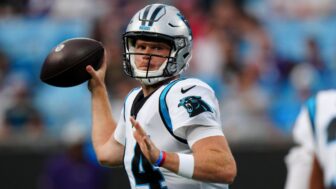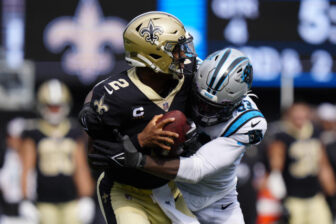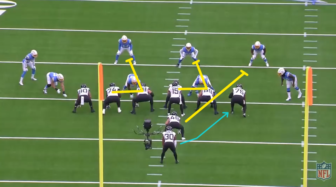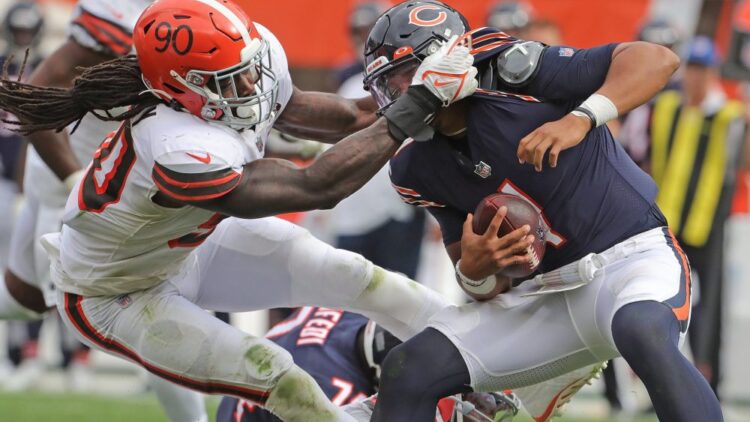
How’s that “generational” 2021 rookie QB class looking so far? Generational certainly, though not in the way we’d hoped.
Of the five signal-callers taken in the first round of the 2021 NFL Draft, four have had starting opportunities. Trevor Lawrence, Zach Wilson, Justin Fields, and Mac Jones have a combined completion percentage of 57.4% — nearly 10 points below the league average. Their total QBR is a mere 26.4. It’s not like one particularly bad rookie is pulling the average down. They rank 21st, 30th, 31st, and 32nd in QBR. Lawrence, Wilson, and Jones account for more than 23% of the league’s interceptions thus far, and Wilson and Fields account for almost 12% of the sacks.
Buy or Sell: NFL Hot Starts
Obviously, we’re still very early on in this season and these rookie QB’s careers. There’s also a reason their teams were selecting at the top of the draft. The time to pass final judgement is still far off, but none at this point are on track to replicate a Kyler Murray or Justin Herbert rookie season.
Instead of calling it a career for any of these guys, let’s simply take a look at where each of them is at and why they’re struggling to meet expectations.
Justin Fields, Chicago Bears
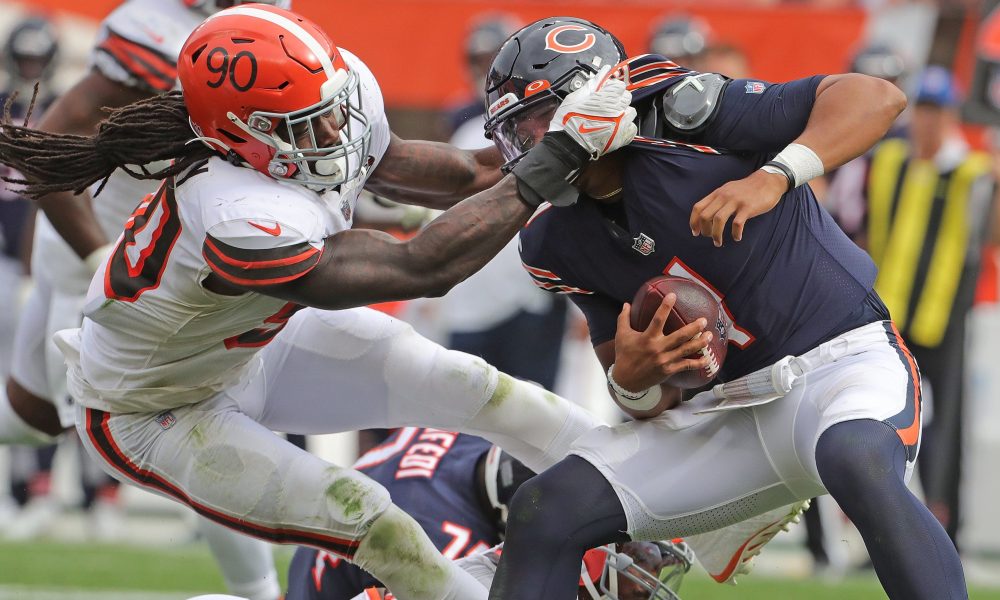
Let’s get the ugliest stats out of the way first.
Justin Fields could not have had a much worse first NFL start. Against the Cleveland Browns in week three, Fields was 6/20 for 68 yards and three rushing attempts for 12 yards. He faced a steep uphill battle from the start of the game. Fields’ targeted wide receivers averaged a league-worst 1.3 yards of separation and 45% of his pass attempts were into tight windows (the highest of any team in a game since 2019).
Matt Nagy and the Chicago Bears also put out what was widely considered to be the worst offensive game plan in recent memory. Against the likes of Myles Garrett and Jadeveon Clowney, the Bears had only five pass blockers 67% of the time. Without sufficient protection, Fields was sacked nine times. No effort was made to help Fields escape the pressure either, as Chicago only ran three passing plays outside of the pocket. Talk about throwing him in the deep end.
Fields’ overall stats aren’t much better, though he didn’t see many snaps until starter Andy Dalton got injured. His overall completion percentage is 40, with 138 yards, zero touchdowns, one interception, and 7.0 QBR. On the ground, he has 14 carries for 46 yards and one touchdown. The good news for Fields is that it can’t get much more difficult. So much of what was wrong for Chicago’s offense in his first start was out of his control and made him look worse than he is. Given the unique challenges of the game and his smaller than average sample size, I don’t think we’ve seen enough of Fields to make any meaningful comments on his ceiling or floor. The biggest variable for him, unfortunately, is whether Nagy can figure out how to use him.
Zach Wilson, New York Jets
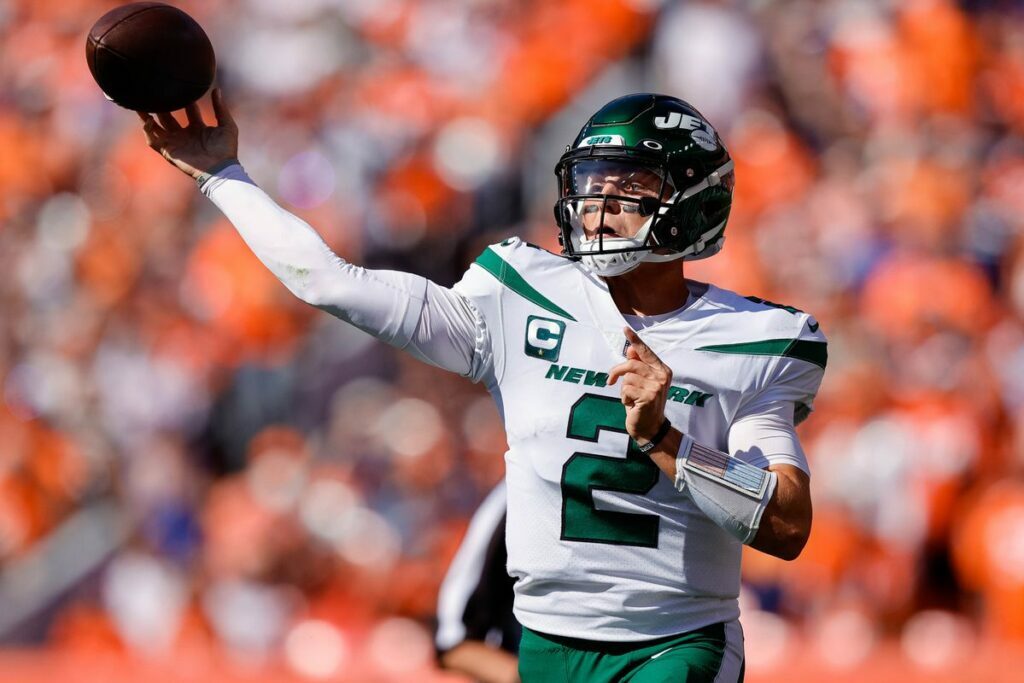
Zach Wilson, like Fields and most of these rookie QBs, isn’t working with much. However, Wilson has two more games of tape than Fields, and it doesn’t help his case. Wilson is completing 55.2% of passing attempts for 628 yards, two touchdowns, and a league-high seven interceptions. His 21.9 QBR is 31st in the league.
Wilson is not the only rookie leader in New York, though. Head coach Robert Saleh and offensive coordinator Mike Lafleur are also in their first years in their roles and are attempting to implement a new offense of the Shanahan variety. That implementation hasn’t been so smooth. The Jets have not established an efficient running game and Wilson holds the league’s worst QBR on play-action at 12.4. At the root of these issues is the struggling offensive line, who lost left tackle Mekhi Becton to IR and has allowed the most sacks in the league (15) and second-most hurries (18). When Wilson can get the ball out, it’s often dropped. The Jets hold the fourth worst drop percentage in the NFL, per Pro Football Reference.
Largely due to these problems with scheme, Wilson is forcing the ball downfield. Because he doesn’t have receivers open in the middle of the field, he seems to always have his eyes on the big play rather than the safe option. This has led to some pretty ugly interceptions, like his fourth against the Patriots in which he inexplicably split two downfield receivers with the ball. He also can’t completely blame his line for the pressure he’s facing. According to Next Gen Stats, Wilson leads the league in sacks that took more than 4.5 seconds from snap to tackle, with eight.
Again, the Jets are the Jets are the Jets. Wilson is not the reason they lose games. But he’s also not explosive enough at this point to give them a shot. The physical traits and the arm are there for Wilson and if he can get help so that the game slows down for him, we’ll see his true potential.
Trevor Lawrence, Jacksonville Jaguars
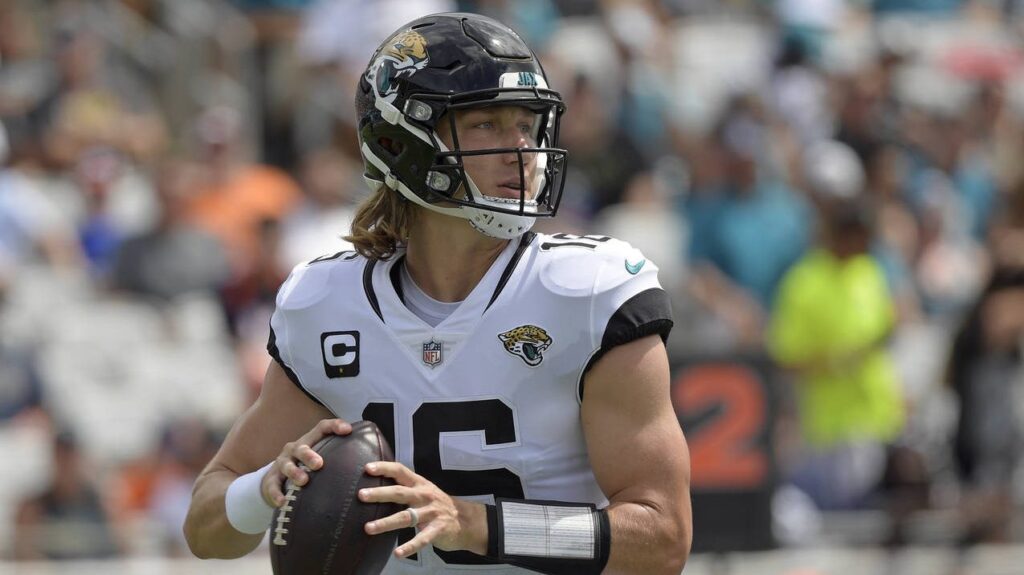
The “Tank for Trevor” crew in Jacksonville had hoped Trevor Lawrence’s freshman year in the NFL would mimic his freshman performance at Clemson. However, Clemson against ACC opponents had a much different supporting cast than the Jaguars against the rest of the NFL.
Lawrence currently holds a completion percentage of 54.2% for 669 yards, five touchdowns, and a QBR of 23.1. He is tied with Wilson for the most interceptions in the league at seven. Like many rookie quarterbacks, Lawrence has struggled to adjust to the speed and talent of NFL secondaries. Thus, he is often guilty of holding onto the ball too long and trying to force big plays rather than settling for safe, but little, gains. Unlike other rookies, Lawrence hasn’t faced a ton of pressure, as Jacksonville has invested heavily in protecting their number one pick. However, the Jaguars have struggled to establish a running game for the rookie starter to lean on. Thus, Lawrence faces many third and long situations that force him into desperation-play situations.
The biggest area of concern for Lawrence is his accuracy. Though we see flashes of the talent that mesmerized college football fans for three years, Lawrence’s best plays come between stretches of missed throws. Through the first two weeks, his off-target percentage was 35. That was ten more than any other NFL quarterback. According to PFF metrics, he also leads the league in turnover worthy plays.
Of note, all Lawrence’s struggles are occurring under a head coach who seems very much in over his head. The system in Jacksonville doesn’t help a young quarterback. The Trevor Lawrence that made three CFB playoffs is still very much in him. Unfortunately, the transition from a franchise with bottomless top-level talent and resources to a disorganized and rebuilding one, will be bumpy.
Mac Jones, New England Patriots
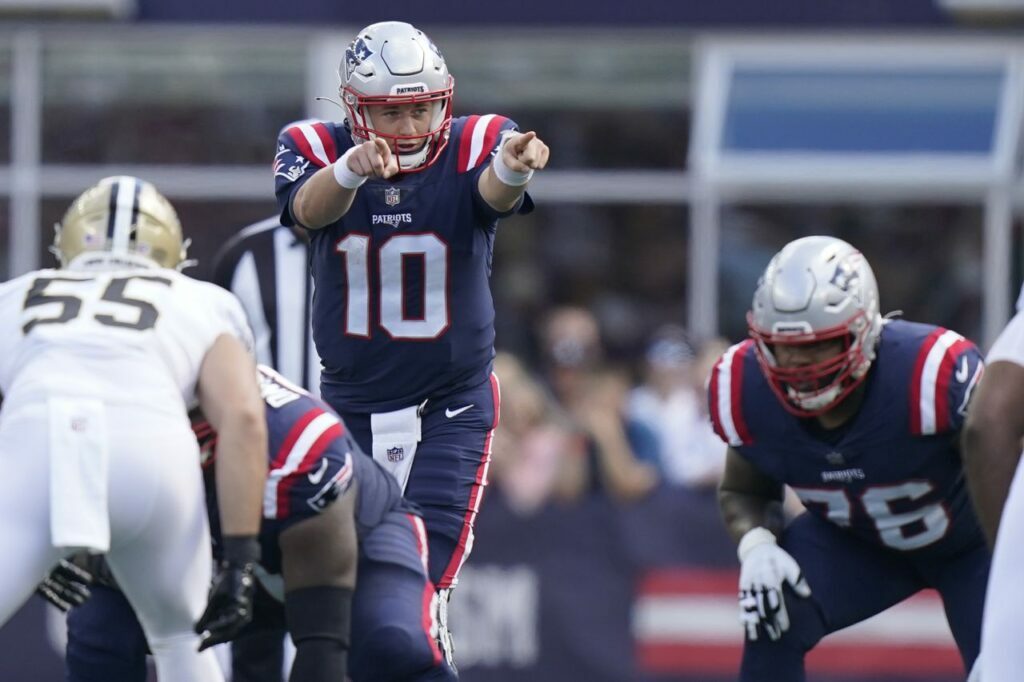
Though the bar is low for rookie QBs this year, Mac Jones tops them all. He has the only completion percentage among rookies above 60, at 67.5%. He has thrown for 737 yards, two touchdowns, three interceptions, and a QBR of 52.0.
Jones looked solid in his first two starts for the Patriots, boasting passer ratings of 102.6 and 89.0. However, many claimed his clean play was due to conservative play-calling by offensive coordinator Josh McDaniels. His completion percentage fell from a 73.9 average over his first two games to 58.8 against the New Orleans Saints in week three. After having thrown no interceptions to start the season, Jones threw three against the Saints.
One of those interceptions occurred when Jones was hit as he threw. Another was the result of a puzzling bobble by Jonnu Smith. The third came on a fourth-and-ten play with 15 seconds left and the Patriots down two scores. Because New England played from (far) behind the whole game, Jones was finally offered opportunities to throw the deep ball, but didn’t impress. While his college play indicated 36.8% completion on deep passes, according to Next Gen Stats, Jones completed only 16.7%.
The biggest knock on Jones at the moment seems to be his lack of ability (thus far) to make big plays, I think the stats are misleading. Jones was heavily pressured by the Saints’ blitz all game. Seven of Jones’ eighteen downfield attempts came on the Patriots’ final drive when they were down 15 with two minutes left. One could argue this play doesn’t carry much weight. New Orleans had a 99.9% chance of winning at this point, as long as they kept everything in front of them. Thus, many of Jones’ deep incompletions were late-game desperation throws into thick coverage.
When New England can run the ball, Jones is efficient and smart with the football. The Patriots’ offense lacks weapons to make big plays and finish drives, but Jones is hardly their biggest concern. Despite the criticism of his explosiveness, Jones is the only rookie QB with more big-time throws than turnover-worthy plays, according to PFF metrics. With ball security and consistency paramount, Jones fits nicely in the Patriots’ offense and will elevate them with experience.
Final Thoughts
In each of these cases, the situations these rookie QBs entered into is a huge caveat to their performance thus far. With the pressure to turn organizations around quickly and the expense of an established QB relative to a rookie, the modern NFL pressures teams to play young quarterbacks before they’re totally ready. Thus, rookie QBs are asked to lead thin rosters while learning on the fly. Though these rookies may appear to have been over-hyped, they just need time to adjust. Inevitably, some of these players will become top-level talents and others will fall through the ranks of the QB room. However, the time for that determination isn’t now. At this point, who can improve the most from this slow start to the end of the season may be most indicative of the highest ceiling among the group.

